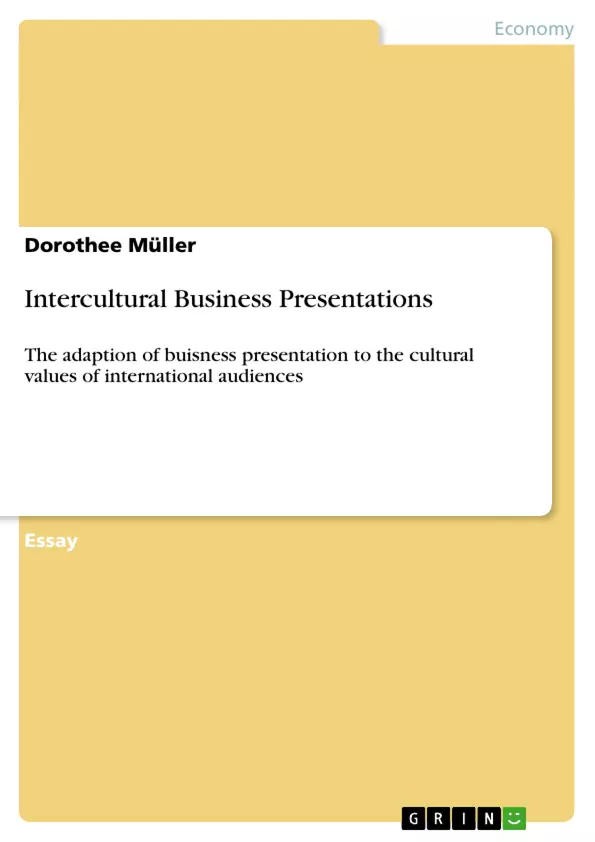In order for any kind of presentations to be effective, it is essential to appreciate the audience one is addressing. Hence, audience analysis is an important part of the initial preparation. Factors like the age group, the degree of professionalism and familiarity with the topic need to be taken into consideration. These considerations must include an assessment as to how much can be assumed to be already known. In an international business environment, another crucial dimension comes into play, namely the cultural particularities of the countries being involved in the interaction.
As Schmidt et al. point out, the key to success in intercultural relationships is the identification of similarities and differences as compared to one’s own culture (2007, p.65, 69). From this derives a cultural competence that enables to work effectively across cultures.
Cultural dimensions in models of national culture depicted by researchers like Hall and Hofstede can provide indications as to what might affect intercultural business presentations. Therefore these are to be considered in order to identify premises, which should be followed when preparing for such a cross cultural business setting. By doing so, it is assumed that the basic particularities of these dimensions are known and therefore do not need detailed explanation.
Inhaltsverzeichnis (Table of Contents)
- Introduction
- Before the presentation: Preparation
- Choice of language
- Setting up the presentation
- During the presentation: Conveying information effectively
- High vs. low context / uncertainty avoidance
- Time
- Face & Humour
- Silence
- After the presentation: Feedback & Response
- Conclusion
Zielsetzung und Themenschwerpunkte (Objectives and Key Themes)
This text examines the importance of cultural awareness in international business communication, specifically focusing on the impact of cultural values on the effectiveness of business presentations. The author analyzes how different cultural dimensions, such as high vs. low context, uncertainty avoidance, and time orientation, can influence the way information is conveyed and received.
- The importance of audience analysis and cultural competence in international business presentations.
- The role of language choice, including the use of English as a lingua franca and its potential limitations.
- The influence of cultural dimensions like high/low context and uncertainty avoidance on presentation style.
- The impact of time orientation on the structure and delivery of presentations.
- The significance of face and humour in international business communication.
Zusammenfassung der Kapitel (Chapter Summaries)
The first chapter introduces the topic of international business communication and stresses the importance of audience analysis in effective presentations. The author emphasizes the role of cultural awareness in intercultural business settings, highlighting the need to understand the cultural particularities of the audience. This section draws on the work of researchers like Hall and Hofstede, who provide frameworks for understanding cultural differences.
The second chapter delves into the preparation stage of a business presentation. The author examines the choice of language, discussing the benefits and drawbacks of using English as a lingua franca. He then analyzes the importance of setting up the presentation according to cultural norms, using examples of seating arrangements and the role of small talk in different cultures.
The third chapter focuses on the presentation itself, examining how to convey information effectively across cultures. The author discusses the influence of high vs. low context communication and uncertainty avoidance on presentation style, arguing that different cultures require distinct approaches to conveying information. He also examines the impact of time orientation on the structure and pacing of presentations.
The text concludes by exploring the importance of face and humour in international business communication. The author notes that different cultures have distinct norms regarding the use of humour and the importance of maintaining face.
Schlüsselwörter (Keywords)
The main keywords and focus topics of this text include: international business communication, cultural awareness, audience analysis, cross-cultural presentations, high/low context, uncertainty avoidance, time orientation, language proficiency, lingua franca, face, humour, and intercultural competence.
- Quote paper
- Dorothee Müller (Author), 2009, Intercultural Business Presentations, Munich, GRIN Verlag, https://www.grin.com/document/134049



